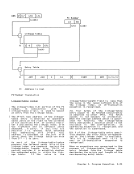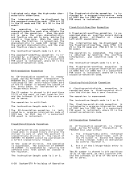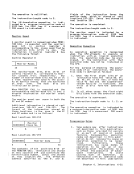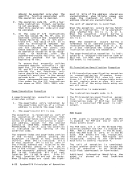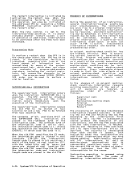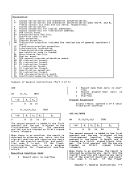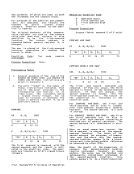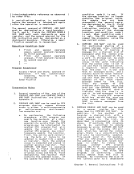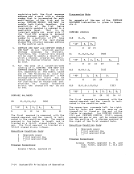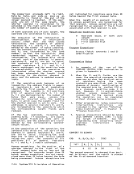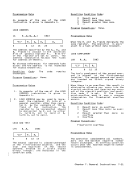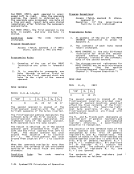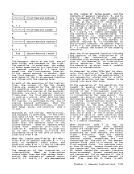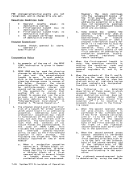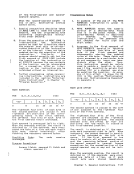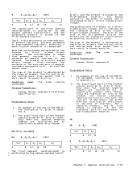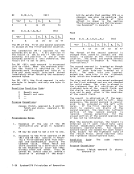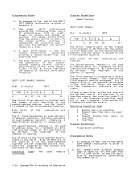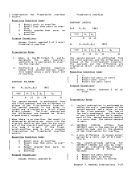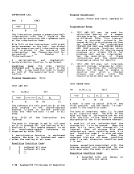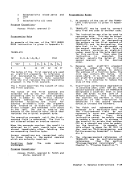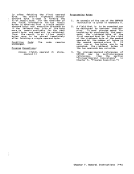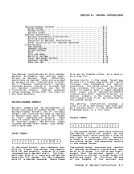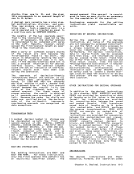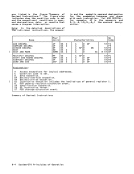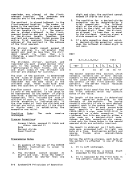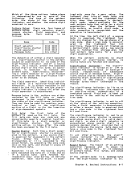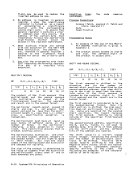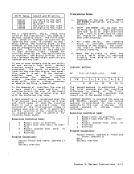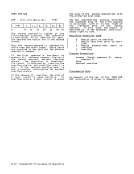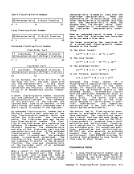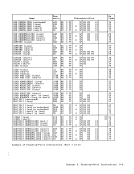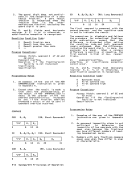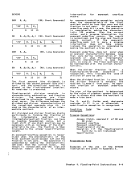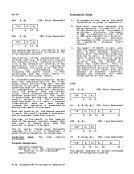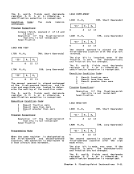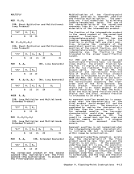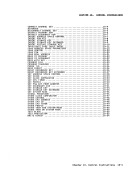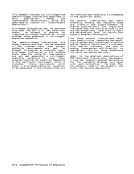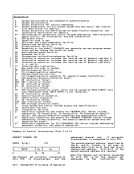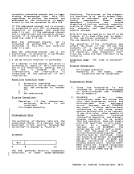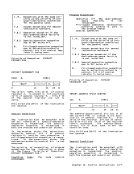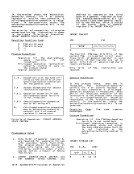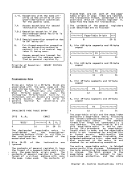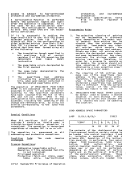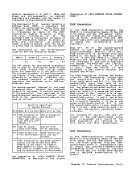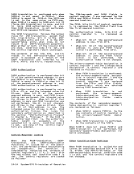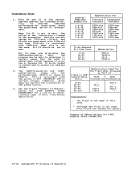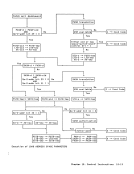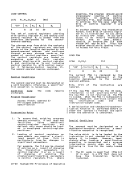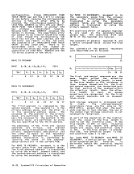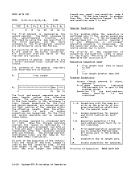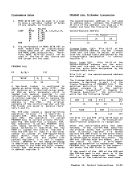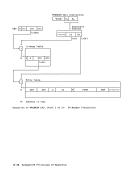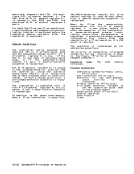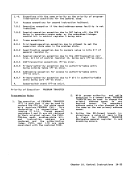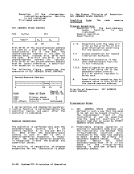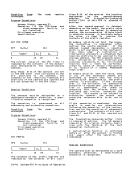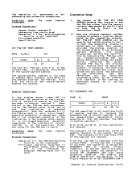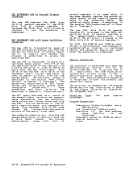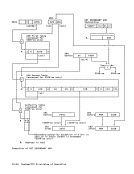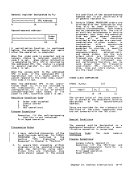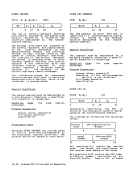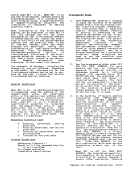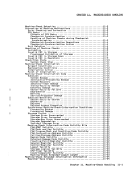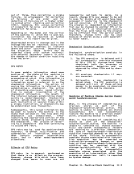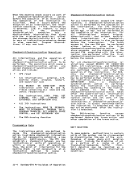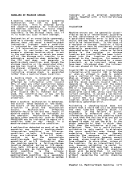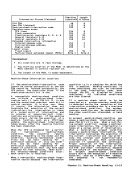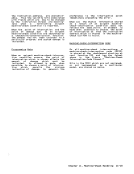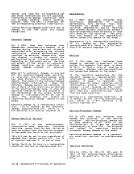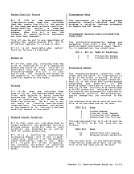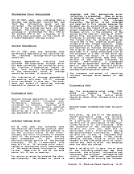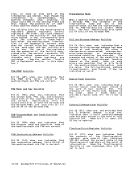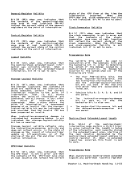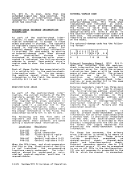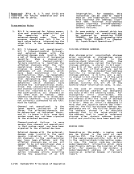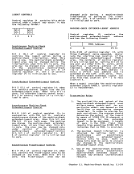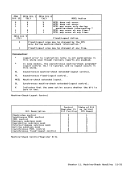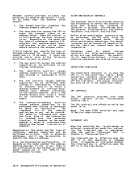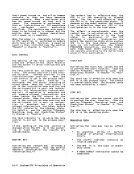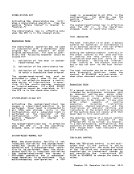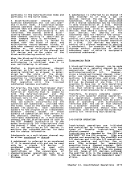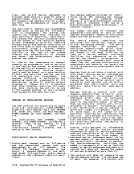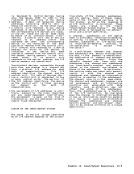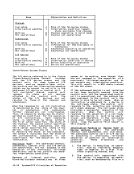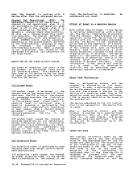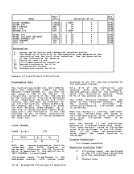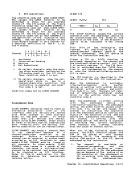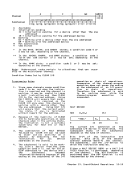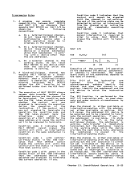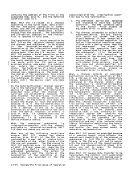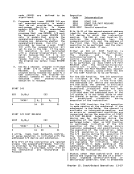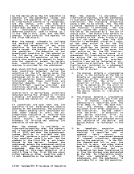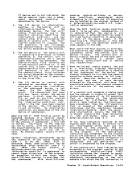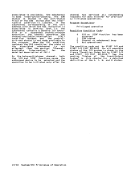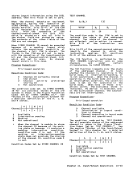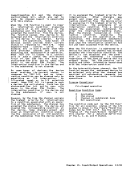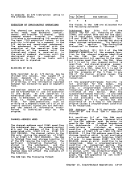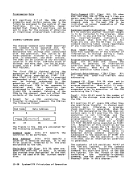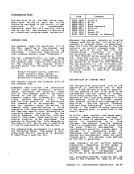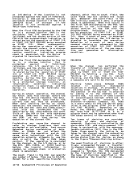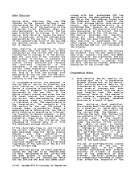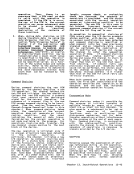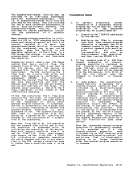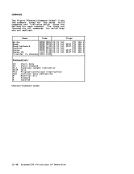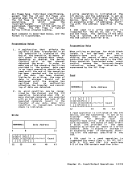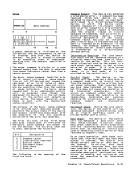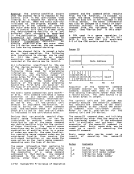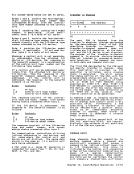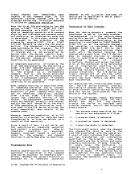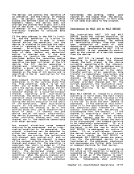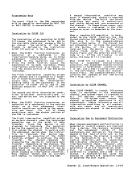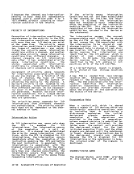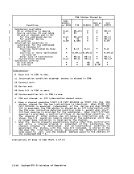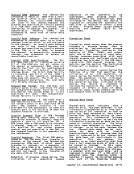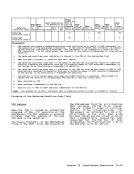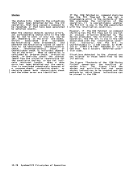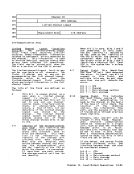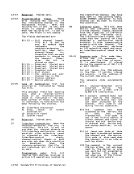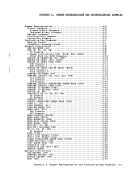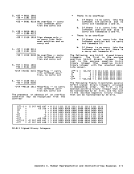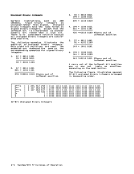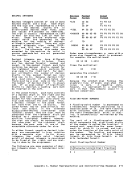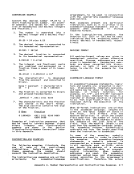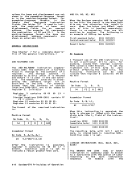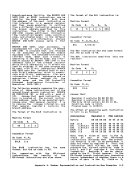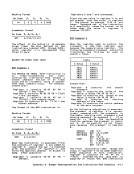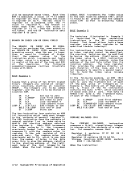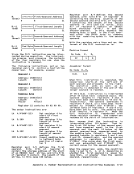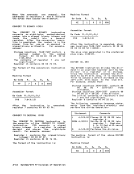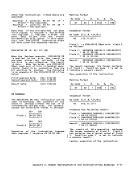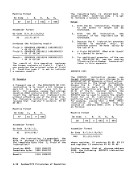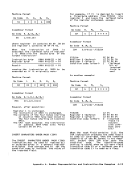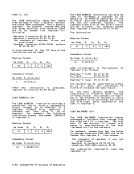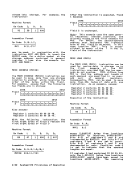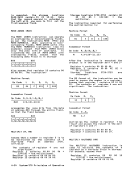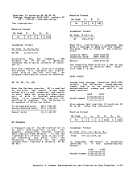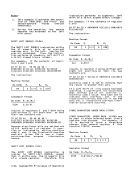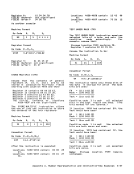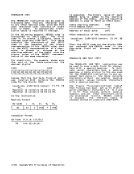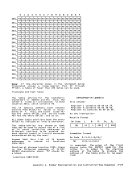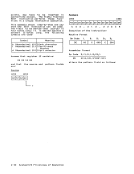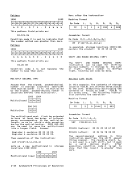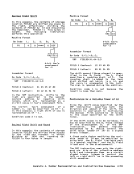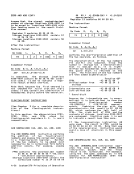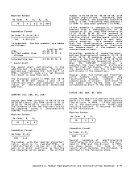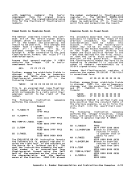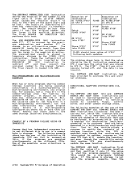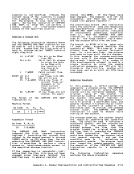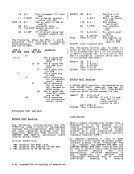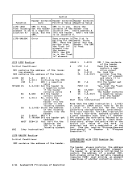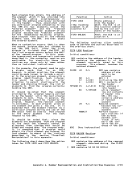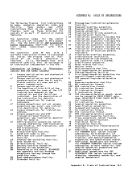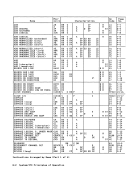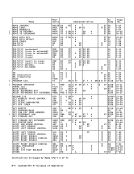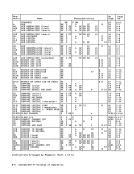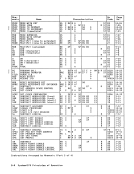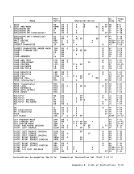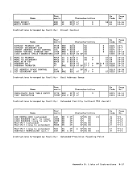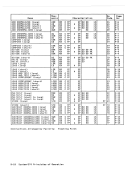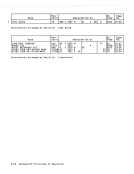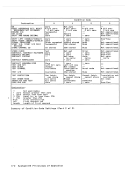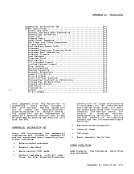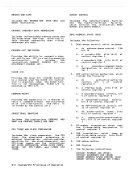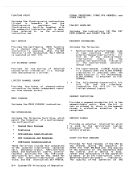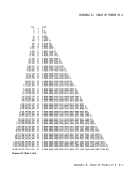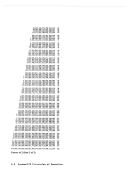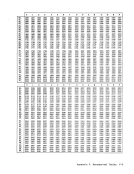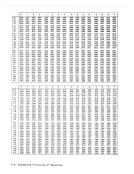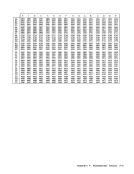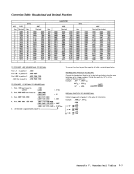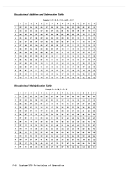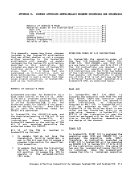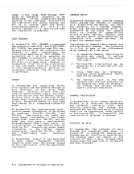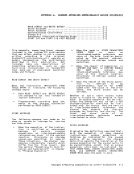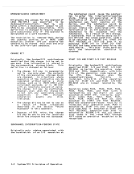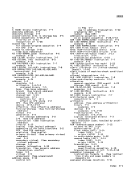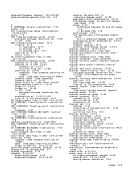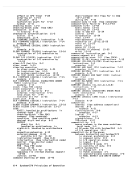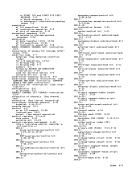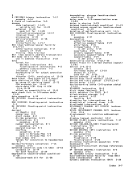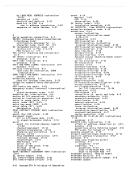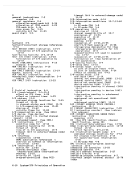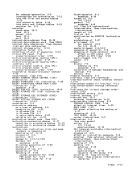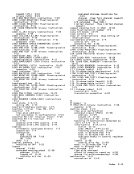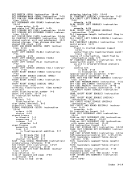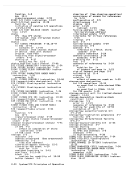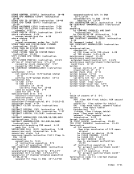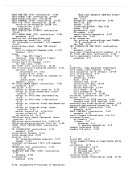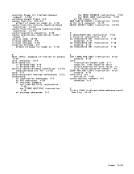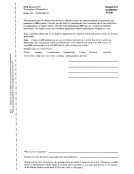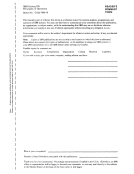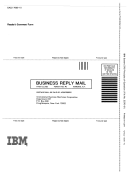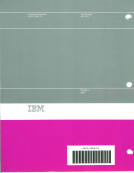information from the device. When HALT DEVICE causes a burst operation on a
byte-multiplexer channel to be termi
nated, the subchannel associated with
the burst operation remains in the work
ing state until the device next provides
status, whereupon the subchannel enters
the interruption-pending state. The
termination of a burst operation by HALTDEVICE on a block-multiplexer channel
may, depending on the model and the
design of the subchannel, take place as
for a selector channel or may allow the
subchannel to remain in the working
state until the device next provides
status.On the byte-multiplexer channel operat
ing in the byte-multiplex mode, theI/O device is selected and the instruction
executed only after the channel has
serviced all outstanding requests for
data transfer for previously initiated
operations, including the operation to
be halted. If the control unit does not
accept the signal to terminate the oper
ation because it is busy or in the not
operational state, the subchannel, if
working, is set up to signal termination
of device operation the next time the
device requests or offers a byte of
data. If command chaining or command
retry is indicated for theI/O operation
using the subchannel, it is suppressed.
When either of the two situations
numbered below occurs, HALTDEVICE caus
es the 16-bit unit-status and channel
status portion of theCSW to be replaced
by a new set of status bits. The
contents of the other fields of theCSW are not changed. The CSW stored
pertains only to the execution of HALTDEVICE and does not describe the I/O operation, at the addressed subchannel,
that is terminated. The extent of data
transfer and the status at the termi
nation of the operation at the
subchannel are provided in theCSW asso
ciated with the interruption condition
caused by the termination. The two
situations are:
1. The addressed device is selected
and signaled to halt the current
operation, if any. TheCSW then
contains zeros in the status field
unless a machine malfunction is
detected.
2. The control unit is busy and the
device cannot be given the signal
to terminate theI/O operation.
TheCSW unit-status field contains
ones in the busy and status
modifier bit positions. The
channel-status field contains zeros
unless a machine malfunction is
detected.
When a channel recognizes an equipment
malfunction during the execution of HALTDEVICE, a CSW mayor may not be imme
diately stored, depending on the state
of the subchannel or the channel model.
When the subchannel is interruption
pending and a malfunction occurs during
the execution of HALTDEVICE, condition
code0 may be set, and the subsequently
storedCSW mayor may not indicate the
malfunction, depending on whether or not
the malfunction affected theI/O opera
tion. When the channel recognizes a
malfunction and the subchannel is work
ing with the addressed device, condition
code0 or 1 may be set, depending on the
channel model. If the channel sets
condition code 1, the contents of the
immediately storedCSW identify the type
of malfunction. If the channel sets
condition code0, the contents of the
subsequently storedCSW identify the
type of malfunction. In either case,
the state of the channel and the
progress of theI/O operation are unpre
dictable. Refer to the SL publication
for the system model to determine its
particular implementation.
When HALTDEVICE cannot be executed
because of a pending logout which
affects the operational capability of
the channel or subchannel, a fullCSW is
stored. The fields in theCSW are all
set to zeros, with the exception of the
logout-pending bit and the channel
control-check bit, which are set to
ones. No channel logout occurs in this
case.
When HALTDEVICE causes data transfer to
be terminated, the subchannel associated
with the operation either (1) remains in
the working state until the channel-end
condition is received and the subchannel
enters the interruption-pending state or
(2) immediately enters the interrup
tion-pending state, depending on the
type of channel. If the subchannel is
shared by other devices attached to the
control unit,I/O instructions addressed
to those devices set the condition code
appropriate to the subchannel states
described.
When HALTDEVICE causes data transfer to
be terminated, the control unit associ
ated with the operation may not become
available until the data-handling
portion of the operation in the control
unit is concluded.Conclusion of this
portion of the operation is signaled by
the generation of channel end. This may
occur at the normal time for the opera
tion, or earlier, or later, depending on
the operation and type of device.
When HALTDEVICE causes data transfer to
be terminated, theI/O device executing
the terminated operation remains in the
working state until the end of the
inherent cycle of the operation, at
which time device end is generated. If
blocks of data at the device aredefined, as in read-type operations on
magnetic tape, the recording medium is
advanced to the beginning of the next
block.Chapter 13. Input/Output Operations 13-21
byte-multiplexer channel to be termi
nated, the subchannel associated with
the burst operation remains in the work
ing state until the device next provides
status, whereupon the subchannel enters
the interruption-pending state. The
termination of a burst operation by HALT
may, depending on the model and the
design of the subchannel, take place as
for a selector channel or may allow the
subchannel to remain in the working
state until the device next provides
status.
ing in the byte-multiplex mode, the
executed only after the channel has
serviced all outstanding requests for
data transfer for previously initiated
operations, including the operation to
be halted. If the control unit does not
accept the signal to terminate the oper
ation because it is busy or in the not
operational state, the subchannel, if
working, is set up to signal termination
of device operation the next time the
device requests or offers a byte of
data. If command chaining or command
retry is indicated for the
using the subchannel, it is suppressed.
When either of the two situations
numbered below occurs, HALT
es the 16-bit unit-status and channel
status portion of the
by a new set of status bits. The
contents of the other fields of the
pertains only to the execution of HALT
that is terminated. The extent of data
transfer and the status at the termi
nation of the operation at the
subchannel are provided in the
ciated with the interruption condition
caused by the termination. The two
situations are:
1. The addressed device is selected
and signaled to halt the current
operation, if any. The
contains zeros in the status field
unless a machine malfunction is
detected.
2. The control unit is busy and the
device cannot be given the signal
to terminate the
The
ones in the busy and status
modifier bit positions. The
channel-status field contains zeros
unless a machine malfunction is
detected.
When a channel recognizes an equipment
malfunction during the execution of HALT
diately stored, depending on the state
of the subchannel or the channel model.
When the subchannel is interruption
pending and a malfunction occurs during
the execution of HALT
code
stored
malfunction, depending on whether or not
the malfunction affected the
tion. When the channel recognizes a
malfunction and the subchannel is work
ing with the addressed device, condition
code
channel model. If the channel sets
condition code 1, the contents of the
immediately stored
of malfunction. If the channel sets
condition code
subsequently stored
type of malfunction. In either case,
the state of the channel and the
progress of the
dictable. Refer to the SL publication
for the system model to determine its
particular implementation.
When HALT
because of a pending logout which
affects the operational capability of
the channel or subchannel, a full
stored. The fields in the
set to zeros, with the exception of the
logout-pending bit and the channel
control-check bit, which are set to
ones. No channel logout occurs in this
case.
When HALT
be terminated, the subchannel associated
with the operation either (1) remains in
the working state until the channel-end
condition is received and the subchannel
enters the interruption-pending state or
(2) immediately enters the interrup
tion-pending state, depending on the
type of channel. If the subchannel is
shared by other devices attached to the
control unit,
to those devices set the condition code
appropriate to the subchannel states
described.
When HALT
be terminated, the control unit associ
ated with the operation may not become
available until the data-handling
portion of the operation in the control
unit is concluded.
portion of the operation is signaled by
the generation of channel end. This may
occur at the normal time for the opera
tion, or earlier, or later, depending on
the operation and type of device.
When HALT
be terminated, the
the terminated operation remains in the
working state until the end of the
inherent cycle of the operation, at
which time device end is generated. If
blocks of data at the device are
magnetic tape, the recording medium is
advanced to the beginning of the next
block.













































































































































